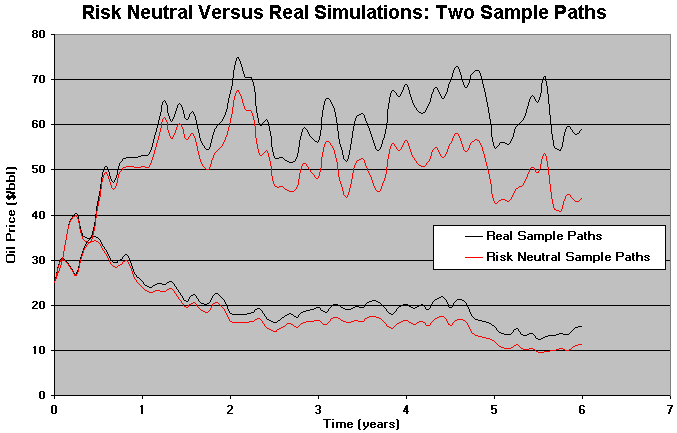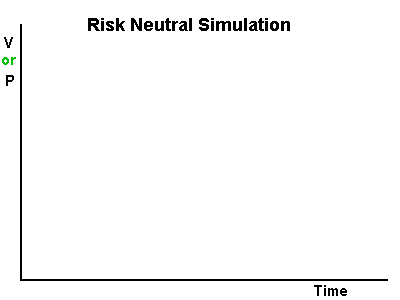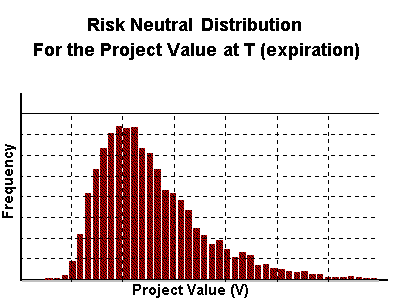Answers and example for geometric Brownian motion (GBM):
The real simulation of a GBM uses the real drift a. The price at future time t is given by:
![]()
The risk-neutral simulation of a GBM uses the risk-neutral drift a’ = r - d . The price at t is:
![]()
The chart below illustrates the difference of risk-neutral and real simulation by showing two sample paths for each type of simulation:

Note in the chart that the paths are parallel, and the risk neutral one is a risk premium lower than real sample path. This issue is because the risk neutral drift is equivalent to subtract a risk premium from the drift (see Trigeorgis' textbook, 1996, p.102):
Where l is the market price of risk for the underlying asset, in the sense that ls is the risk premium. So, r = r + ls (r = risk-adjusted discount rate for the underlying asset), and hence r = a + d = r + ls implies a - ls = r - d.
In other words, the distance between the real and the risk-neutral sample paths grows at a rate equal to the risk-premium p = l.s.
Suppose a real options problem can approximately be represented by an European type call option (for additional discussion of this example, see the Monte Carlo page, section on European real options).
The first step is to simulate risk-neutral sample paths for the
underlying asset (project value or commodity price) and take the
cross-section distribution at the expiration T. You get the risk
neutral distribution for the underlying asset.
The figure below illustrates:

With the risk-neutral distribution of the project value V
at the expiration (T), you can apply the options thinking: rational
managers will exercise the option only if get positive expected values:
F (T)= max. (NPV, 0). This asymetric
risk-neutral distribution for the European-type real options at T
displaces the expected value to the higher value and represents the active
management of real options.
The current value of the real options in this case is just to take the
present value using the risk-free discount rate. The figure below shows
this process.

For the underlying asset, you get the same value:
For the option/derivative, the same is not true:
Risk-neutral valuation is based on the absence of arbitrage, portfolio replication (complete market).
![]()